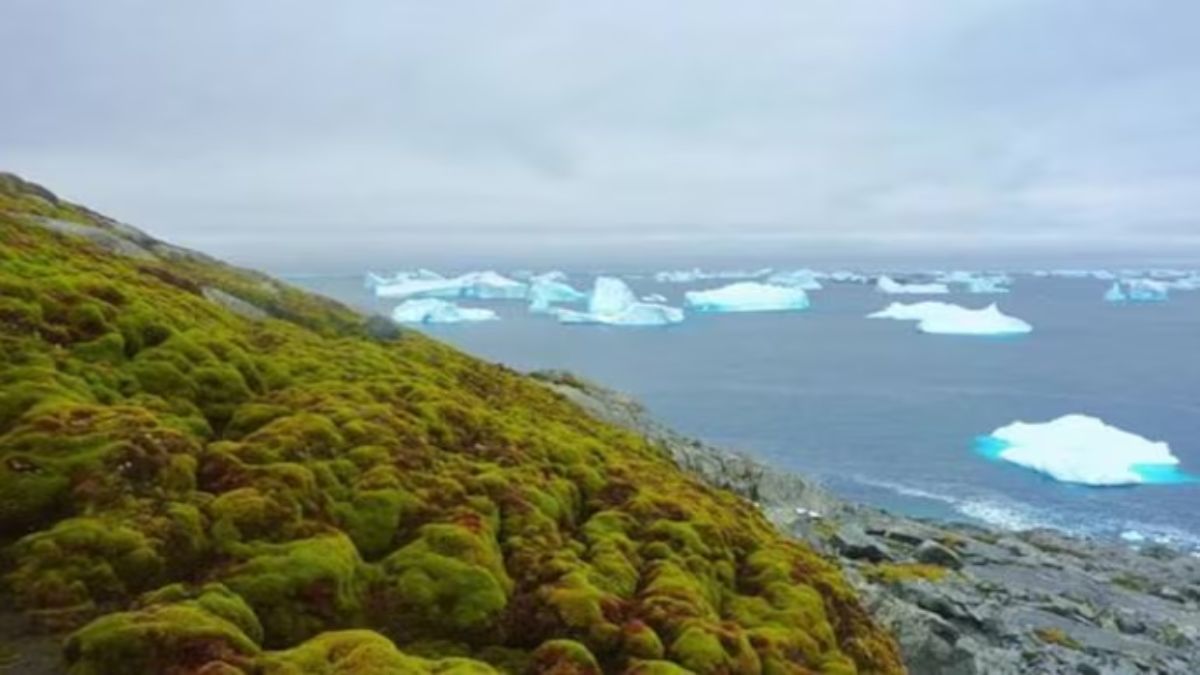Antarctica, the world’s most remote frozen desert, is now sprouting patches of greenery, and scientists are sounding the alarm.
A concerning study published in the journal Nature Geoscience on Friday revealed that plant cover in the icy continent has soared more than tenfold over the last few decades and is growing at an alarming rate.
“The scale of the greening trend we found shocked us,” Tom Roland at the University of Exeter, UK told science magazine News Scientist. “The rate of change we’re seeing in terms of increasing vegetation cover is astounding and, worryingly, accelerating.”
But what’s behind the ‘greening’ of Antarctica? and why is this lush growth a cause for concern? Let’s take a closer look.
Antarctica going green
The Antarctic Peninsula, like many other polar regions, is warming at a pace much faster than the global average, and extreme heat events are becoming increasingly common.
A team of scientists from the University of Exeter, the University of Hertfordshire, and the British Antarctic Survey recently analysed 35 years of satellite data from NASA’s Landsat archive, using Google Earth Engine to observe the “greening” of the Antarctic Peninsula.
Their study revealed a striking increase in vegetation cover across the 500,000 sq km peninsula, with the area expanding from less than one square kilometre in 1986 to nearly 12 square kilometres by 2021.
Further, the spread of the plants, mostly mosses, over nearly four decades has also been speeding up, accelerating by more than 30 per cent between 2016 and 2021.
Dr Thomas Roland, at the University of Exeter, UK, and who co-led the study told The Guardian, “The Antarctic landscape is still almost entirely dominated by snow, ice and rock, with only a tiny fraction colonised by plant life, but that tiny fraction has grown dramatically – showing that even this vast and isolated wilderness is being affected by human-caused climate change.”
Antarctica, often regarded as the coldest place on Earth, has been experiencing record-breaking heat waves. This past summer, parts of the continent saw temperatures soar up to 50 degree Fahrenheit (10 degree Celsius) above average in mid-July.
In March 2022, the region recorded an even more shocking temperature surge, with some areas hitting 70 degree Fahrenheit (21 degree Celsius) above normal, the most extreme temperature departures ever recorded in this part of the planet.
Why is increasing green cover a concern?
The growing green cover in Antarctica is raising alarms as it highlights the significant impacts of human-driven climate change on one of the planet’s most fragile ecosystems.
The spread of vegetation on the Antarctic Peninsula is particularly concerning, as it could lead to the formation of more soil. This development may increase the risk of colonisation by non-native species.
Dr Olly Bartlett from the University of Hertfordshire explained to The Independent, “Many of the plants growing in this extreme environment are capable of colonising bare rock surfaces. The increase in vegetation could create new soils, providing a medium for invasive species to establish."
Another worry is the reduction of the region’s albedo effect—the ability to reflect solar radiation. With darker surfaces from the vegetation absorbing more heat, this could accelerate the warming process, destabilising the ecosystem further. Such changes could lead to biodiversity loss as non-native species outcompete native plants.
Additionally, there is concern that non-native species might be introduced via eco-tourists, scientists, or other visitors to the continent, as warned by Dr Bartlett.
Prof Andrew Shepherd from Northumbria University, speaking to The Guardian, expressed astonishment at the rapid colonisation of ice-free areas: “This place had been hidden from the atmosphere for thousands of years and was colonised by plants within decades of it becoming ice free – it’s astonishing really. It’s a barometer of climate change and a tipping point for the region.”
Dr. Thomas Roland of the University of Exeter told New Scientist that this transformation raises serious concerns about Antarctica’s future and of the continent as a whole.
He added, " In order to protect Antarctica, we must understand these changes and identify precisely what is causing them.”
With input from agencies


)

)
)
)
)
)
)
)
)



